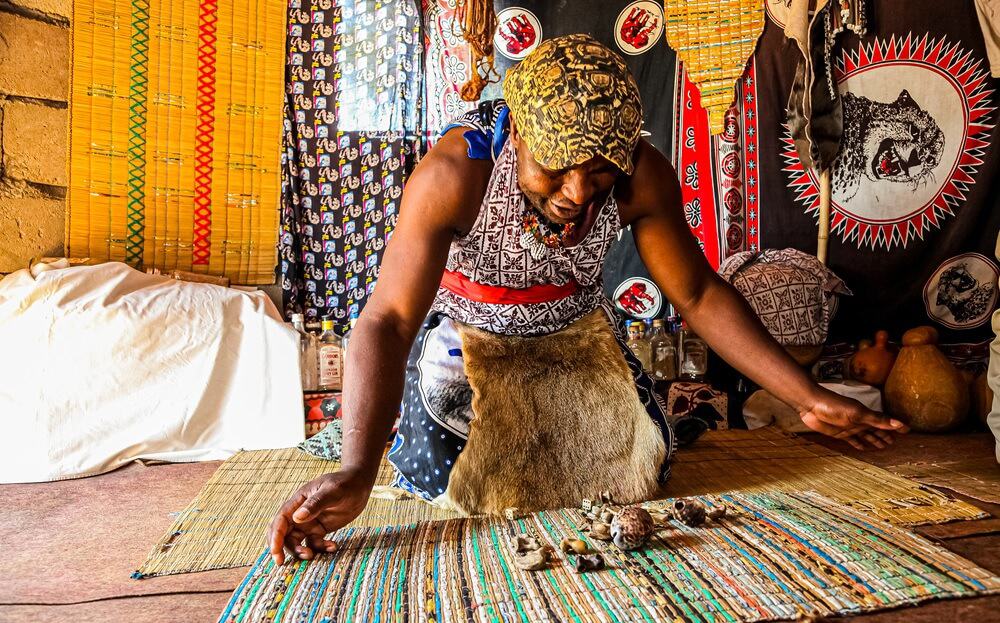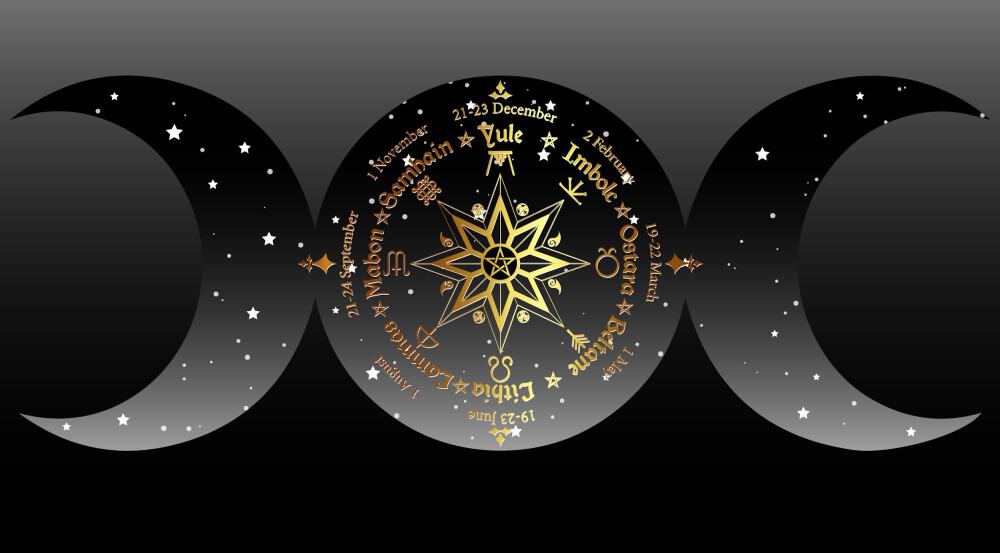Witchcraft gets a bad rap, and that’s hardly surprising, considering it is a world shrouded in mystery and myth. The stereotype suggests witches cast harmful spells and commune with demons.
The belief about witches even influences the iconic Halloween figure. While these mystical figures have fascinated us for ages, there’s much more to their story than the familiar broomsticks and pointy hats.
The Salem witch trials stand as one of the darkest chapters in the history of witchcraft ― a haunting period that still gives many goosebumps.
And yes, there’s more to this tale!
Beyond the trials and tribulations lies a different narrative ― one of empowerment, wisdom, and spirituality. Witchcraft has transformed over the years, giving rise to a modern practice known as Wicca.
Fondly called “The Craft of the Wise” among practitioners, Wicca offers a glimpse into the mystical threads that have woven their way through history.
Of course, it’ll take a lot more than one blog post to peel back the layers of myths and misconceptions surrounding witches and witchery. But here’s a stab at explaining why witches, wisdom, and fear have mattered so much in our shared human story.
The Witch Hunt Chronicles: The Salem Witch Trials

The Salem witch trials stand out as one of the spookiest and most unforgettable chapters in American history. It all went down in the late 17th century in the Massachusetts Bay Colony, leaving a not-so-good lasting impression that lingers to this day.
Here’s a quick look at the Salem witch trials and what drove the harrowing episode.
A Quick Peek at the Salem Witch Trials
The Salem witch trials began in 1692 when a series of accusations erupted in the village of Salem, Massachusetts, where over 200 people were accused of being witches. What followed was a period of mass hysteria and paranoia, leading to the arrest of many individuals.
Among them, 20 faced trial and were executed, with 19 being hanged (mostly women) and one accused male witch subjected to the gruesome punishment of being pressed to death with heavy stones.
While on the topic of witch killings, let’s put one important myth to rest: the notion of witches being burned at the stake is more of a myth and stereotype than a historical fact.
Witch trials and persecutions indeed occur in various parts of the world, but the method of execution varied, including drowning, beheading, and burning the bodies of the deceased.
For example, in English-speaking countries like Scotland, convicted witches were first strangled to death before their bodies were set on fire.
However, it’s likely that somewhere along the line, the Salem saga got tangled up with tales of actual execution by fire in Europe. During European witch trials between the 15th and 18th centuries, they had a thing for burning accused witches at the stake, although the witches often faced the hangman’s noose first.
This practice was attributed to the “Constitutio Criminalis Carolina,” a law in accordance with the Holy Roman Empire, which insisted that witchcraft deserved a death-by-fire punishment.
Now that we have that cleared up, let’s get back to the Salem witch trials.
What exactly drove the witch accusations in Salem? One word: fear!
And when you dig deeper, you’ll find a toxic blend of fear, superstition, and social tensions at the root of the Salem witch trials. This fear and hysteria are common in a deeply religious and conservative community like 17th century Salem village, where any deviation from the norm was met with suspicion.
A series of unusual and unexplained events, including fits, seizures, and mysterious illnesses among young girls, triggered panic. These incidents were quickly attributed to witchcraft, setting off a chain reaction of accusations.
Unfortunately, the accusations were marked by a disturbing pattern where accusers (often young girls) pointed fingers at their neighbors and acquaintances, claiming they had seen these individuals consorting with the devil and practicing black magic.
To make things worse, the trials were anything but fair.
Anyone with a witchcraft accusation faced a difficult choice, caught between the devil and the deep blue sea: confess to witchcraft and implicate others or maintain their innocence and risk execution. This led to a cascade of accusations and confessions.
A Grim Reminder
The Salem witch trials remind us of the dangers of mass panic and narrow-mindedness, as well as the abuse of power. Innocent lives were shattered, families torn apart, and an entire community was left scarred by the memory of its own dark past.
These scars have shaped our understanding of justice, religion, and the human capacity for both cruelty and redemption.
The silver lining? The eerie saga holds plenty of valuable lessons.
The trials sparked crucial discussions about the presumption of innocence, the importance of due process, and the need to separate religion from the state. Today, the trials are a stark reminder of the consequences of blind prejudice and the importance of safeguarding the rights and dignity of all individuals, regardless of their faith, belief system, or background.
If you want to learn more about the Salem witch trials and dig deeper into this story, I suggest giving the American History Tellers podcast series a listen. It offers an in-depth exploration of this haunting chapter in history that will leave you wanting to learn more.
The Mystical Melting Pot: Witch Culture in the Caribbean, New Orleans, and Beyond

Here’s a quick glimpse into the mystical world of witchcraft as we spotlight traditions in the Caribbean, New Orleans Voodoo, and global witchcraft practices.
Caribbean Witchcraft
In the Caribbean, you’ve got practices like Obeah and Santería, which are deeply rooted in a connection between spirituality and the natural world.
Originating African spiritual traditions, Obeah is a mix of shamanism, herbalism, and folk magic. Those who practice it, the “Obeah men” and “Obeah women,” have a deep understanding of nature’s ties to the spiritual realm and dabble in both white and darker magic.
On the flip side, Santería combines African spirituality from Yoruba traditions in West Africa with Catholicism. Practitioners throw all sorts of ceremonies, music, and dance parties to honor Orishas ― deities overseeing various aspects of life and nature.
Both traditions highlight the Caribbean’s deep connection to nature, where herbs, roots, and spiritual guides steer life’s journey.
New Orleans Voodoo
Voodoo is deeply ingrained in the Crescent City’s culture, luring folks in with its captivating rituals.
Ever heard of the spirit of the bayou? Even if you’ve not, you’ve probably bumped into Bayou Rum, the craft-distilled rum made from locally grown Louisiana sugarcane.
As it turns out, the bayou is a mystical water body that’s said to be home to supernatural beings. People in Louisiana take this seriously, and honoring the spirits is a big part of their cultural heritage.
Louisianans go all out to show their respect for these spirits in all sorts of ways, like voodoo practices, altars, rootwork (using herbs, roots, and charms to keep the spirits happy), and even graveyard rituals. Honoring the Bayou spirits this way reflects the deep connection that the people of Louisiana have with the land and the supernatural world.
Worldwide Mystical Religions
Now, if you wander beyond the Caribbean and New Orleans, you’ll find witchcraft (or its equivalent) in various forms across the globe.
African witchcraft, for instance, has witch doctors who chat with the spirit world, sorting out healing, protection, and future-telling. Then there’s European witchcraft, where witches tap into the energies of the earth, moon, and stars in their magical practices.
While these practices come in all shapes and sizes, they’ve got some common themes:
- Nature worship
- The idea that everything is connected
- The belief that intention and rituals have superpowers
In other words, whether it’s chatting with ancestors, dancing with spirits, or mixing herbs with magic, witchcraft isn’t inherently evil. Instead, it’s all about reverence for nature’s cycles and recognition of interconnected life.
The Resurgence of Witchcraft: Wicca and Modern Witchery

With witch parties and a plethora of books on the topic popping up here and there, it’s clear that witchcraft is making a comeback. And contrary to popular beliefs, witches aren’t naturally wicked or maleficent ― at least, modern witches aren’t.
As witchcraft resurges, Wicca ― a modern pagan religion ― takes center stage in modern witchery. The belief system is popular in today’s world, and it’s even made its way into pop culture (hello, Halloween).
You’ve probably seen a handful of Wicca symbols in books, online stores, or even historic buildings without realizing what they represent (we’ll get into the symbols in a bit).
Wicca owes much of its popularity to Gerald Gardner, a British civil servant and amateur anthropologist. Born in Blundellsands, Lancashire, England, in 1884, Gardner is widely regarded as the father of modern witchcraft.
He was instrumental in reviving and promoting modern witchcraft practices, starting his involvement in the 1940s. Through his writings and teachings, Gardner paved the way for the modern practice of Wicca, which combines elements of nature worship, ritual magic, and reverence for the divine.
At the core of Wicca lies a key moral system that encourages practitioners to live harmoniously with the world around them and to exercise their will without causing harm to others.
This moral system is expressed in the Wiccan Rede: “An’ it harm none, do what ye will.” In old English, that basically means “Do as you wish as long as you aren’t harming anyone.”
Wicca Symbols of the Natural World and Divine
Wicca really digs symbolism, and many of its symbols serve as a bridge between the natural world and the divine.
Here’s the lowdown on a few Wicca symbols that are kind of a big deal in Wiccan circles:
- Pentacle: The pentacle, often depicted as a five-pointed star within a circle, symbolizes the elements of earth, air, fire, water, and spirit. It serves as a protective and grounding emblem, representing the interconnectedness of these elements in the natural world.
- Triple Goddess: This symbol is about the moon’s phases — Maiden, Mother, and Crone. It represents the cycle of life, death, and rebirth, reflecting the eternal rhythms of nature and the divine feminine.
- Cauldron: The cauldron is made of cast iron and appears in rituals and spells, usually for burning incense. The symbol signifies transformation and rebirth in Wicca, representing the Goddess’ womb, where spiritual growth and change can happen.
- Candles: Candles in Wiccan ceremonies symbolize the element of fire. Different candle colors are associated with various intentions and purposes, making them a versatile tool for spellwork and meditation.
The Fear of the Feminine: Women and Witchcraft

In modern witchcraft, feminism takes center stage, flipping how we perceive women’s roles in all things mystical. Although women were disproportionately targeted in the past for their role in witchery, feminism has seriously impacted contemporary witchcraft and transformed the narrative.
Though modern witchcraft shares some common threads with Wicca, it’s a diverse and evolving landscape, with many witches today embracing a variety of practices, from full moon gatherings to intuitive healing.
It’s not uncommon for contemporary witches to proudly refer to themselves as “high priestesses” or “priests,” drawing inspiration from traditions like Wicca.
Intuitive healers, often linked to the mystical arts, can indeed be considered witches. Modern witchcraft revolves around attuning to nature’s energy and tapping into the intuitive and mystical sides of life.
This encompasses a wide range of practices, from various healing techniques to divination, herbalism, and more. Some of today’s witches focus on synching up with the energies of the moon and stars, while others embrace shamanic practices or the worship of various deities.
What’s truly fascinating about the modern witchcraft movement is its emphasis on self-discovery and empowerment. It stresses the interconnectedness of life and the power of intention and ritual. Unfortunately, these aspects are often misunderstood because people are afraid and hesitant to break away from the norm.
The Gendered Nature of Witch Hunts
Taking a step back into the cultural history of witchcraft, we find a rather unsettling story where women got singled out and took the brunt of the blame during witch hunts.
The thing is, the whole tragic witch-hunting business was driven by a fundamental misunderstanding of the innate power and wisdom of the feminine.
The Witch as a Symbol of Empowerment
Fast forward to today, and you’ll find women proudly reclaiming the “witch” label and flipping it from a symbol of fear to one of empowerment. This shift is more about recognizing the deep connection women share with nature as a source of wisdom and strength.
Today, modern witches like Starhawk (formerly Miriam Simos) and Fiona Horne are rewriting the narrative, encouraging women to embrace their mystical roots with pride.
Starhawk is a well-known figure in the modern witchcraft community. She’s an author, an activist, and co-founder of Reclaiming Tradition, a Pagan, feminist, and socially-conscious movement. Her work emphasizes the profound connection between spirituality, nature, and social change, and she has written several influential books on the subject.
Fiona Horne, on the other hand, is an Australian witch, author, and singer. Her approach to witchcraft combines contemporary spirituality with a strong bond with nature. She’s all about encouraging women to embrace their mystical roots and live their truth.
These modern witches are not just redefining witchcraft but also the role of women in this mystical realm. They inspire women to take pride in their spiritual practices and reconnect deeply with nature. Their work is a significant driving force behind the current resurgence of witchcraft.
The Eternal Quest for Witch Wisdom: The History of Witchcraft
Witchcraft goes way back to ancient times, where early practitioners included shamans and wise women. Shamans were spiritual leaders who bridged the gap between people and spirit worlds, offering guidance and healing.
And wise women? They were herbalists and midwives who used their plant knowledge combined with herbs and natural remedies to heal and deliver babies. Basically, these folks were the go-to problem solvers in their communities.
Today, modern witches are still passionate about herbs and natural remedies, keeping that ancient connection with the earth alive.
Here’s the thing, though. Witchcraft isn’t just about casting spells and whipping up herbal concoctions and teas. It’s also about divination, leadership, and passing down knowledge about ourselves, nature, and the universe.
And despite all the witch hunts and drama, lots of people are now rediscovering this ancient wisdom and making it part of their modern lives.
Seeking Your Own Path to Magic?
Transformation is at the core of modern witchcraft, and carving your unique path to empowerment requires embracing your inner feminine strength. The real magic happens when you toss out fear and societal pressures ― only then can you discover your true self.
No doubt, this transformational process might feel a bit daunting, but you don’t have to go on the journey alone, not when help is available.
If you’re ready to start your journey of self-discovery and empowerment, consider teaming up with a life coach who can guide you through life’s twists and turns. Don’t let fear rule your world; instead, embrace your unique path toward wisdom and self-empowerment, and let your inner witch shine!



